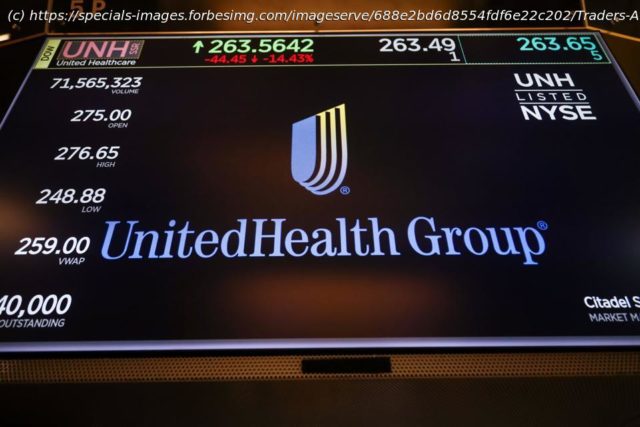Why UnitedHealth stock is breaking: DOJ probes, vertical integration risks, shaky earnings quality, and fading investor trust despite strong headline profits
UnitedHealth just reported billions in quarterly profit. Earnings were strong. The company sounded stable. And yet, Wall Street is dumping the stock.
Shares are trading near multi-year lows, underperforming peers, and reacting poorly to each quarterly release. The market doesn’t move like this for nothing—so what’s really going on?
Markets often sniff out risks long before they’re made official. The headlines are piling up: government investigations, operational failures, and leadership questions, but the price has already started to discount something deeper. Investors are trained to react to numbers. But when structure breaks, the numbers are often the last to go.
This isn’t about a soft quarter. The model itself is cracking, and the market sees it. The way UnitedHealth generates earnings, the incentives behind its vertical integration, and the regulatory heat all point to fragility that isn’t captured in consensus spreadsheets. The market is whispering what many investors don’t want to admit: that something is changing here. And once trust fades, the re-rating isn’t temporary. It’s structural.UnitedHealth Stock: Big, Profitable, Misunderstood
UnitedHealth trades with a market value of about $226 billion, against $400 billion in revenue for 2024, with 2025 revenue expected to reach mid‑$445 billion to $448 billion. Size doesn’t really equal a safe company; it often hides the fragility beneath.
Most investors can’t describe how the business works. They see adjusted EPS. They don’t question the mechanics. They assume that anything producing this much cash must be built to last. But what looks durable can rot from the inside. The core of UnitedHealth’s engine is vertical integration. Optum decides on care, delivers it, and pays itself. One hand washes the other, all under the same roof. It’s efficient when unexamined. But regulators are finally paying attention. When the payer, provider, and data all sit in one unit, it becomes harder to separate health outcomes from billing outcomes. Investors often mistake size for insulation. But complexity cuts both ways. When that model starts to wobble, through government probes, whistleblower claims, or unexplained earnings distortions, it doesn’t usually collapse overnight. It slowly leaks. This is what we are witnessing.
The price action is the tell. This isn’t about sentiment anymore. It’s about what the market now knows; the market no longer trusts what it thought it understood. You can see it is undone. Slowly at this point. But it’s picking up.UnitedHealth Is In The Crosshairs Of The Regulators
The Department of Justice now runs both criminal and civil investigations into UnitedHealth’s Medicare Advantage billing, officially confirmed on July 24, 2025. Washington is targeting diagnostic coding and risk adjustment practices tied to higher payouts. A process investigators say may have involved pressure, bonuses, and algorithmic recommendations to staff for certain lucrative diagnoses.
At the center is Optum, UnitedHealth’s massive care delivery and analytics arm, which assigns diagnoses, delivers services, and influences payer reimbursement. That vertical structure underpinned margin expansion until it became a regulatory vulnerability. Congress and CMS are now eyeing those same incentives for bundled services that may prioritize profit over care. And according to multiple reports, lawmakers are drafting reforms to Medicare Advantage to clamp down on what they see as systemic abuse.
This is more than a compliance issue. If enforcement leads to fines or limits on Optum’s ability to steer claims, UnitedHealth loses both margin and narrative. The company disclosed a potential settlement cost of $1.6 billion tied specifically to these investigations.
For investors, this isn’t a question of past performance but future structure. If Washington forces a redesign in how payer, provider, and auditor relationships operate within Optum, valuation multiples change. You won’t see regulatory risk on a spreadsheet. It’s not in the line items. But it’s in every fund manager’s head. And the market is already pricing that doubt.Earnings Vs. Trust
UnitedHealth keeps beating the numbers. But the market’s not cheering anymore, and that should make investors stop to think.
Home
United States
USA — Financial UnitedHealth Stock Is Cracking Despite Strong Earnings—Here’s What Wall Street Sees






